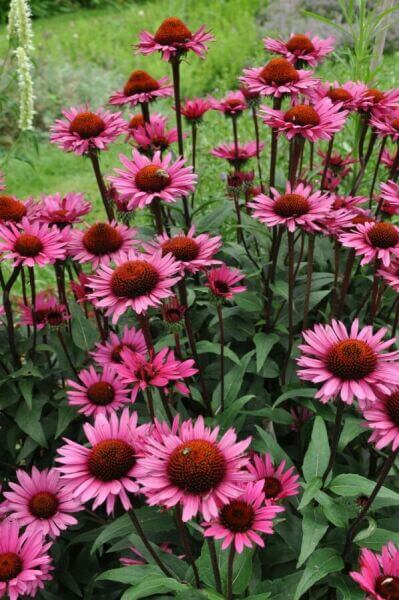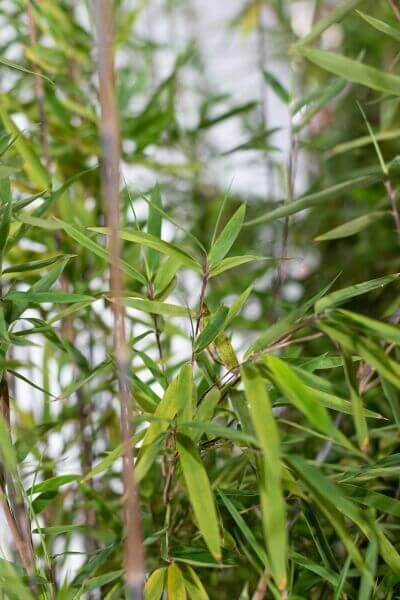Hedge Plants For Low Maintenance Gardens
Hedge Plants For Low Maintenance Gardens
Blog Article
Best Hedging Plants For Spring Flowers
Enhance your garden's allure with rich hedge varieties such as Yew (Taxus), Thuja, Laurel, Photinia, and Bamboo, celebrated for their structural integrity and ecological benefits.
Yew and Thuja supply evergreen coverage and winter resilience, while Laurel provides fast development and broad, fragrant leaves.
Photinia includes seasonal beauty with its vibrant red foliage, and Bamboo lends a low-maintenance, tranquil ambiance.
These hedges enhance air quality, reduce noise, and develop tranquil, private areas.
Proper planting, spacing, and maintenance guarantee energetic development and ecological consistency.
Explore how these lavish varieties can elevate your garden's charm and wellness.
Key Takeaways
Transform Your Garden With Lush Hedge Ranges
- Select Yew for its thick, evergreen development and unrivaled durability.
- Opt for Laurel for its fast development and broad leaves, ensuring quick privacy.
- Select Photinia for its dynamic seasonal foliage, which turns a striking dark red.
- Use Bamboo for a low-maintenance, winter-hardy hedge with visual appeal.
- Area plants 2-3 per meter and prune routinely for optimum development and health.
Popular Hedge Plants
When changing a garden with lush hedge varieties, it's important to think about popular hedge plants such as Yew, Thuja, Laurel, and Photinia due to their special attributes and advantages.
Yew (Taxus) is extremely respected for its longevity and dense, green development, making it a prime option for sustaining landscapes.
Thuja is kept in mind for its evergreen foliage and robust winter resilience.
Photinia adds seasonal vibrancy with red leaves that darken in time, creating dynamic visual appeal.
Laurel offers rapid development and aromatic, broad leaves, ideal for fast personal privacy.
In Addition, Bamboo is an excellent option for atmosphere, providing a low-maintenance, winter-hardy choice that enhances the garden's aesthetic with its elegant, swaying walking canes.
These choices accommodate a variety of horticultural needs and choices.
Advantages of Garden Hedges
Garden hedges offer a multitude of benefits, making them a valuable addition to any landscape. These natural barriers are cost-effective to execute and offer significant wind defense, improving air circulation and adding to noise decrease. The thick foliage of hedges like Thuja and Beech ensures privacy by blocking exposure, creating a tranquil and remote environment.
Hedges likewise play an important role in microclimate policy, supplying a steady environment that promotes plant growth and decreases temperature variations. Their complex leaf structures filter pollutants, enhancing air quality and contributing to a much healthier garden ecosystem.
Furthermore, hedges excel in sound reduction, taking in and deflecting sound waves to lower ambient noise levels. This dual performance of supplying both visual and acoustic privacy boosts the overall tranquility and aesthetic appeal of any garden.
Planting and Upkeep Tips
For an effective hedge, meticulous preparation of the planting area is important. Make sure the soil has correct pH and drain to support strong root development.
Area the plants properly for the chosen species. Water the hedge often throughout its preliminary development phase, adjusting as required with seasonal changes.
Implement a systematic insect control and disease prevention technique, using chemical or organic treatments when needed. Frequently check for aphids, termites, and fungal infections.
Apply mulch to maintain wetness and suppress weeds. Seasonal pruning promotes dense growth and air circulation, essential for plant health.
Following these guidelines will help you cultivate a vibrant, well-kept hedge that improves the charm of your garden.
Spacing and Trimming Standards
Spacing and Trimming Standards
Proper spacing and trimming are crucial for cultivating healthy, visually appealing hedges. Appropriate spacing makes sure each plant receives adequate nutrients, light, and air flow.
Follow these guidelines for ideal hedge maintenance:
- Spacing: Position hedge plants 2-3 plants per meter to encourage robust growth.
- Pruning Techniques: Regular pruning is essential for maintaining desired hedge height and shape. Trim brand-new development in summer season and cut down older wood throughout winter.
- Seasonal Care: Adjust trimming schedules and methods according to seasonal requirements to make sure plant health.
- Hedge Height: Frequently screen and trim to preserve the desired hedge height and achieve consistent aesthetics.
Sticking to these steps will ensure your hedge grows, boosting both the appeal and functionality of your garden.
Choosing the Right Hedge
Picking the Right Hedge
Choosing the appropriate hedge includes assessing elements such as fully grown height, foliage density, and ecological resilience. Effective hedge plant selection requires comprehending each species' development characteristics and site-specific versatility.
For example, Yew (Taxus) offers exceptional longevity and thick growth, while Thuja is notable for its winter season resilience. Furthermore, considering maintenance requirements is vital; fast-growing species like Laurel or Privet need regular cutting, whereas low-maintenance options like Bamboo or Ivy may be preferable for those looking for minimal maintenance.
Environmental aspects such as soil type, light accessibility, and wetness conditions ought to likewise guide the choice process. This mindful method guarantees the picked hedges will flourish, supplying both practical and aesthetic advantages to the garden landscape.
Shipment and Planting Recommendations
To ensure your hedge plants flourish, they need to be delivered by specialized couriers and planted without delay upon arrival.
Follow these essential actions for effective planting:
- Soil Preparation: Enrich the soil with organic matter to enhance drainage and nutrient content.
- Planting Depth: Produce a trench two times the width and equivalent to the depth of the root ball.
- Watering Techniques: Water thoroughly after planting, keeping the soil consistently moist but not filled.
- Mulching: Use a layer of mulch to keep wetness and suppress weeds.
Customer Support and Service
Provided the important function of prompt help in horticultural pursuits, our customer support team is offered 6 days a week through telephone, e-mail, and social networks to use expert guidance and swiftly deal with any issues. Their commitment to quick response times ensures customer satisfaction by dealing with queries connected to plant health, optimum planting approaches, and upkeep schedules.

Email
Within 24 hours
This extensive assistance system, enhanced by a stellar 9.3/ 10 client rating, highlights our commitment to improving the gardening experience for every single customer.
Regularly Asked Concerns
The Length Of Time Does It Consider Hedge Plants to Develop?
Hedge plants generally require one to three years to become fully established, with the exact duration varying by types and growing conditions.
Reliable care throughout this important duration is necessary for robust development. Consistent watering, watchful weed control, and suitable fertilizer application are pivotal in promoting strong root development.
For example, fast-growing types Article source like Laurel might develop faster, while slower-growing ranges such as Yew may take longer. Thorough upkeep speeds up the facility process, leading to dense and healthy hedges.
What Are the Best Hedge Plants for Privacy?
The concern of the very best hedge plants for personal privacy includes evaluating evergreen and deciduous options.
Evergreen hedges like Thuja, Laurel, and Cypress supply year-round coverage, guaranteeing continuous privacy.
On the other hand, deciduous hedges such as Beech offer seasonal personal privacy, shedding leaves in colder months.
Key upkeep pointers for privacy hedges consist of routine trimming, fertilizing in spring, and proper spacing-- generally 2 to 3 plants per meter.
In addition, constant watering and thorough weed removal are crucial for promoting healthy, dense growth.
Can Hedge Plants Draw In Wildlife to My Garden?
Yes, hedge plants can draw in wildlife to your garden by offering important benefits like shelter, food, and nesting sites, therefore enhancing regional biodiversity. For example, yew, holly, and laurel are outstanding for drawing in birds, while ivy supports a variety of insects.
However, it is very important to note that there are some drawbacks, such as increased upkeep to manage pests and routine maintenance. Carefully selecting and keeping hedge ranges can assist balance these benefits and downsides, eventually promoting a dynamic and sustainable environment in your garden.
Exist Any Flowering Hedge Plants Available?
Yes, there are flowering hedge plants readily available that can improve the appeal of your garden.
For example, Elaeagnus, likewise called Olive Willow, produces aromatic white flowers in the fall, adding a touch of elegance.
Photinia, another popular choice, showcases lively red leaves that develop into an abundant green, producing a vibrant visual effect throughout the seasons.
To ensure these plants thrive, it's important to practice correct pruning methods and seasonal upkeep, such as trimming brand-new growth in the summertime and cutting back in the winter.
These procedures will help preserve the health and visual appeal of your flowering hedges.
How Do I Avoid Insects in My Hedge Plants?
To prevent insects in hedge plants, employ natural insect control approaches and maintain proper hedge care. Present beneficial insects like ladybugs, which take advantage of damaging pests, to create a balanced environment.
Frequently inspect your hedges for signs of invasion and quickly eliminate any afflicted parts to avoid the spread. Make sure the health of your hedges by using well balanced fertilizers and supplying adequate water.
Utilize mulching to retain soil moisture and proper spacing to decrease plant stress and promote robust growth. These practices collectively help in reducing insect problems and preserving a healthy hedge.
Conclusion
In essence, selecting the best hedge varieties such as Yew, Thuja, and Laurel can transform any garden into a tranquil haven. These plants supply year-round greenery, improve aesthetic appeal, and deal practical advantages like sound reduction and wind security.
Proper planting methods, precise spacing, constant watering, and seasonal trimming are crucial for optimum growth.
Trusted delivery services and skilled customer support make sure a smooth experience from purchase to planting, making it simpler than ever to raise your outdoor space.
Garden hedges provide a wide range of advantages, making them a valuable addition to any landscape. These natural barriers are cost-effective to carry out and provide substantial wind protection, boosting air circulation and contributing to sound reduction. The thick foliage of hedges like Thuja and Beech ensures personal privacy by obstructing visibility, developing a secluded and peaceful environment.

Pruning Techniques: Regular pruning is vital for preserving desired hedge height and shape. Cut brand-new growth in summer and cut back older wood during winter.
Report this page